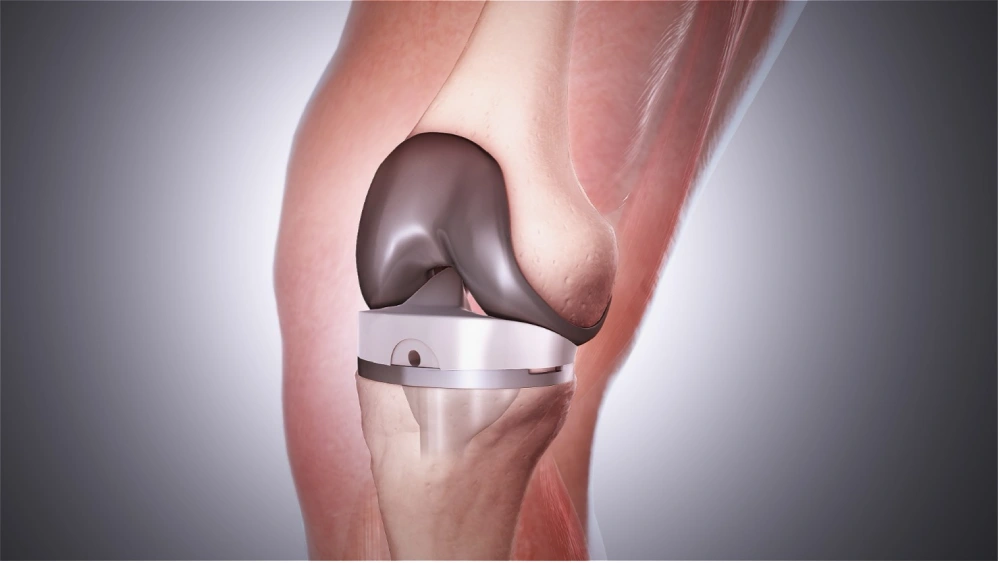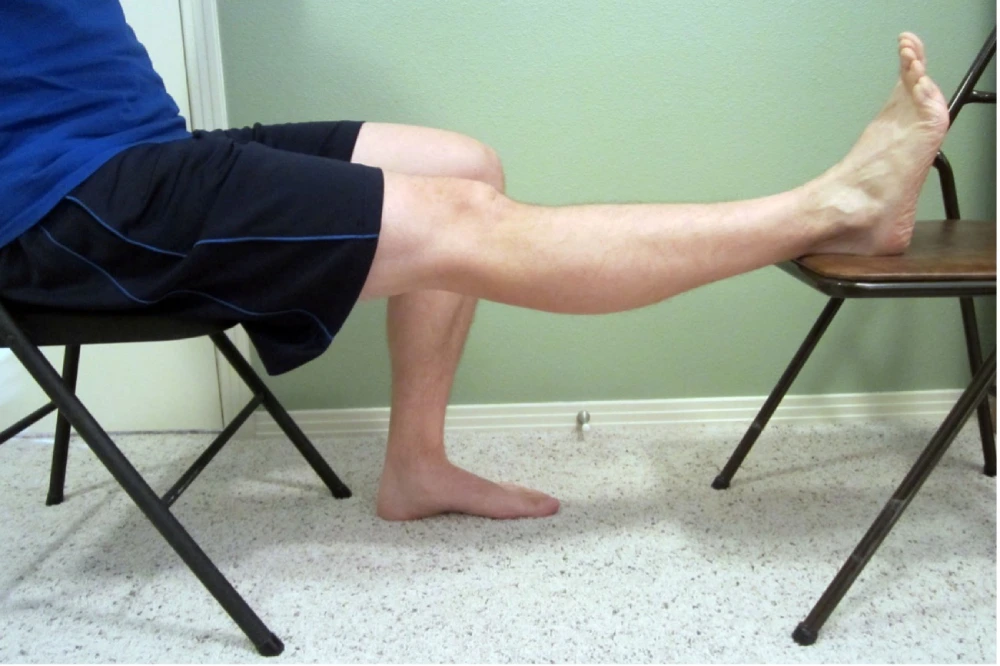When considering orthopedic surgery, knee replacements are a spark of hope for those with crippling knee pain and restricted range of motion. But the road to complete recovery doesn’t stop in the operation room. It also reaches into the house, where careful rehabilitation activities West Vancouver are essential to knee joint restoration in terms of strength, flexibility, and function. We explore the topic of at-home total knee replacement exercise in this article, including advice, suggestions, and a planned regimen to help you recover.

10 Common Causes of Knee Problems Leading to Knee Replacement
Knee problems that may ultimately necessitate knee replacement surgery and knee exercises after tkr, can stem from various underlying conditions and factors. Some common causes include:
1. Osteoarthritis
This degenerative joint disease is a primary cause of knee pain and stiffness, particularly in older individuals. Over time, osteoarthritis includes the knee joint’s cartilage, leading to bone-on-bone friction and discomfort.
2. Rheumatoid Arthritis
Unlike osteoarthritis, rheumatoid arthritis is an autoimmune condition that causes chronic inflammation and damage to the synovial lining of the joints, including the knees. Over time, this inflammation can erode cartilage and bone, resulting in pain, swelling, and deformity.
3. Post-Traumatic Arthritis
Previous knee injuries, such as fractures or ligament tears, can increase the risk of developing post-traumatic arthritis. Over time, damaged tendons may lead to joint degeneration and necessitate knee replacement surgery.
4. Other Forms of Arthritis
Less common types of arthritis, such as psoriatic arthritis or ankylosing spondylitis, can also affect the knees and contribute to joint damage and deterioration.
5. Avascular Necrosis
This condition occurs when the blood supply to the bone is compromised, leading to bone tissue death. Avascular necrosis can cause bone collapse in the knee joint and following arthritis.
6. Congenital Disorders
Structural abnormalities or congenital conditions, such as hip dysplasia or malformed knee joints, may predispose individuals to early-onset arthritis and joint degeneration.
7. Obesity
Excess body weight places added stress on the knee joints, accelerating cartilage wear and tear and increasing the risk of arthritis development.
8. Genetic Factors
Genetic predisposition can influence the development of knee problems, including arthritis and other joint disorders.
9. Overuse or Repetitive Stress
Activities involving repetitive knee motions or excessive stress, such as kneeling or squatting, can lead to joint damage and eventual arthritis.
10. Age
Getting older is a significant risk factor for knee problems and degenerative joint conditions, making older adults more prone to requiring knee replacement surgery.

Understanding Knee Replacement Surgery and Rehabilitation
Before exploring home exercises after knee replacement, let’s understand knee replacement surgery. It is also called total knee arthroplasty (TKA), which is the procedure of replacing worn-out or diseased knee joints with artificial implants to reduce pain and enhance movement. Although the surgery marks a crucial step, the real test comes during the recovery phase. Home exercises after knee surgery focus on regaining flexibility, building muscle strength around the knee, and enhancing overall functionality. Home exercises are essential during this period, working alongside therapy sessions at the clinic to aid in sustained recovery.
Common causes of knee issues include osteoarthritis, rheumatoid arthritis, post-traumatic arthritis, avascular necrosis, congenital disorders, obesity, genetic factors, overuse, and aging.
Types of Home Exercises After Knee Replacement Surgery
Here are several types of knee exercises after knee replacement surgery including:
· Knee Extension Exercises
Knee extension exercises after knee replacement focus on restoring full extension to the knee joint, which is essential for walking and performing daily activities without limitations.
· Knee Strengthening Exercises
Knee strengthening exercises after knee replacement target the muscles around the knee, including the quadriceps, hamstrings, and calf muscles, to improve stability and support.
· Non-Weight Bearing Exercises
Non weight bearing exercises after knee surgery don’t involve bearing weight on the operated leg and are recommended to prevent tension on the knee joint while still promoting mobility and circulation.
Benefits and Long-Term Effects of Home Exercises
Consistent engagement in home exercises yields a multitude of benefits beyond the immediate recovery period. Not only do these exercises aid in the recovery process by promoting tissue healing and preventing stiffness, but they also have long-term effects on knee health and function. By maintaining strength, flexibility, and range of motion through regular exercise, individuals can enjoy improved joint longevity and reduced risk of future complications such as osteoarthritis progression.
Post-knee replacement exercises include knee extension, strengthening, and non-weight bearing exercises, crucial for mobility and preventing complications.

Knee Replacement Exercise Program
A knee replacement exercise program is vital for restoring strength, flexibility, and mobility after surgery. Typically prescribed by healthcare professionals, this program consists of various exercises aimed at improving the function of the knee joint. Following a structured exercise program can significantly contribute to the success of knee replacement surgery and aid in the overall rehabilitation process.
Sample Home Exercise Program
A comprehensive home exercise program following knee replacement surgery typically includes a combination of knee extension exercises, strengthening exercises, and non weight bearing exercises. Here’s a sample program to guide you through your rehabilitation journey:
· Knee Extension Stretch
To do knee extension exercises after tkr begin by sitting on a chair with your feet planted firmly on the floor. Slowly extend your operated leg, ensuring your heel remains in contact with the ground. Hold this position for 10-15 seconds before releasing. Repeat this stretch 10 times.
· Quad Sets
Whether seated or lying down, straighten your legs. Engage the muscles at the front of your thigh (quadriceps) by tightening them for 5-10 seconds. Relax and repeat this contraction 10-15 times.
Straight Leg Raises
Lie on your back with your non-operated knee bent and your foot flat on the floor. Straighten your operated leg and lift it off the ground, maintaining a straight knee. Hold for 5-10 seconds before lowering slowly. Repeat this movement 10-15 times.
· Heel Slides
While lying on your back with both knees bent and feet flat on the floor, slide your operated heel towards your buttocks, bending your knee comfortably. Hold briefly before returning to the starting position. Perform this slide 10-15 times.
· Ankle Pumps
Whether sitting or lying down with legs extended, alternate pointing your toes up towards your body and then downwards away from your body. For long term exercises after knee replacement complete this pumping motion 20-30 times to improve ankle mobility and circulation.
Between Weight Loss and Chiropractic Care
A knee replacement exercise program, prescribed by healthcare providers, restores strength, flexibility, and mobility post-surgery, promoting healing and preventing stiffness for successful long-term recovery.

Conclusion
Engaging in a total knee replacement exercise regimen is crucial for effective rehabilitation post-surgery, leading to restored function and improved mobility. By following the guidelines provided here and following a structured exercise plan, you can maximize your recovery and work towards long-lasting knee health. Despite potential challenges, perseverance and dedication can yield remarkable results, allowing you to regain an active lifestyle. Book an appointment for massage therapy or west vancouver chiropractors through the website
Knee Replacement Rehabilitation Exercises in West Vancouver Clinic
At our West Vancouver clinic, knee replacement rehabilitation exercises are tailored to each individual’s needs, aiming to facilitate a smooth recovery process. Our skilled therapists guide patients through a personalized exercise regimen focused on enhancing strength, flexibility, and range of motion in the knee joint. From gentle stretches to targeted strengthening exercises, our comprehensive approach helps patients regain functionality and mobility. With our support and expertise, patients can achieve optimal results and regain their quality of life after knee replacement surgery. Call us now to set up an appointment to fasten your knee replacement rehabilitation.